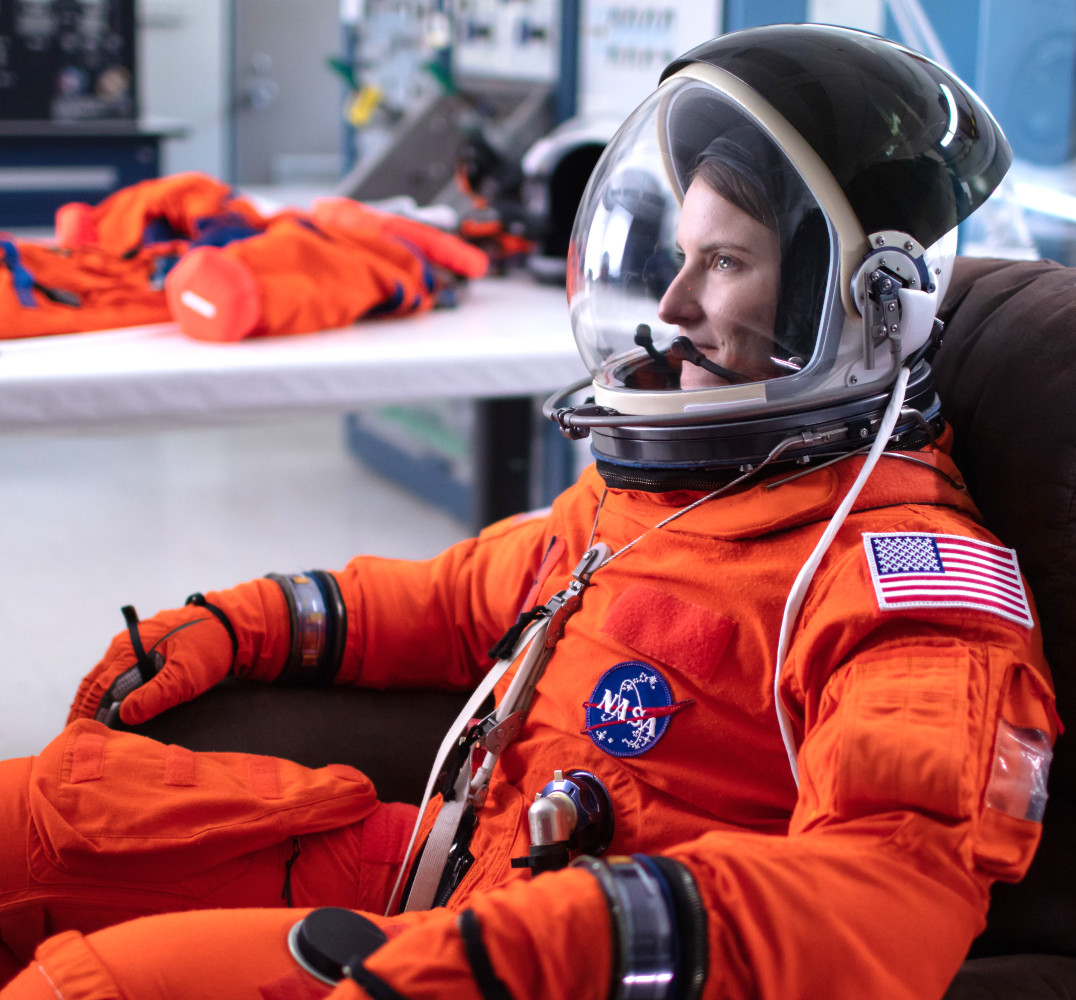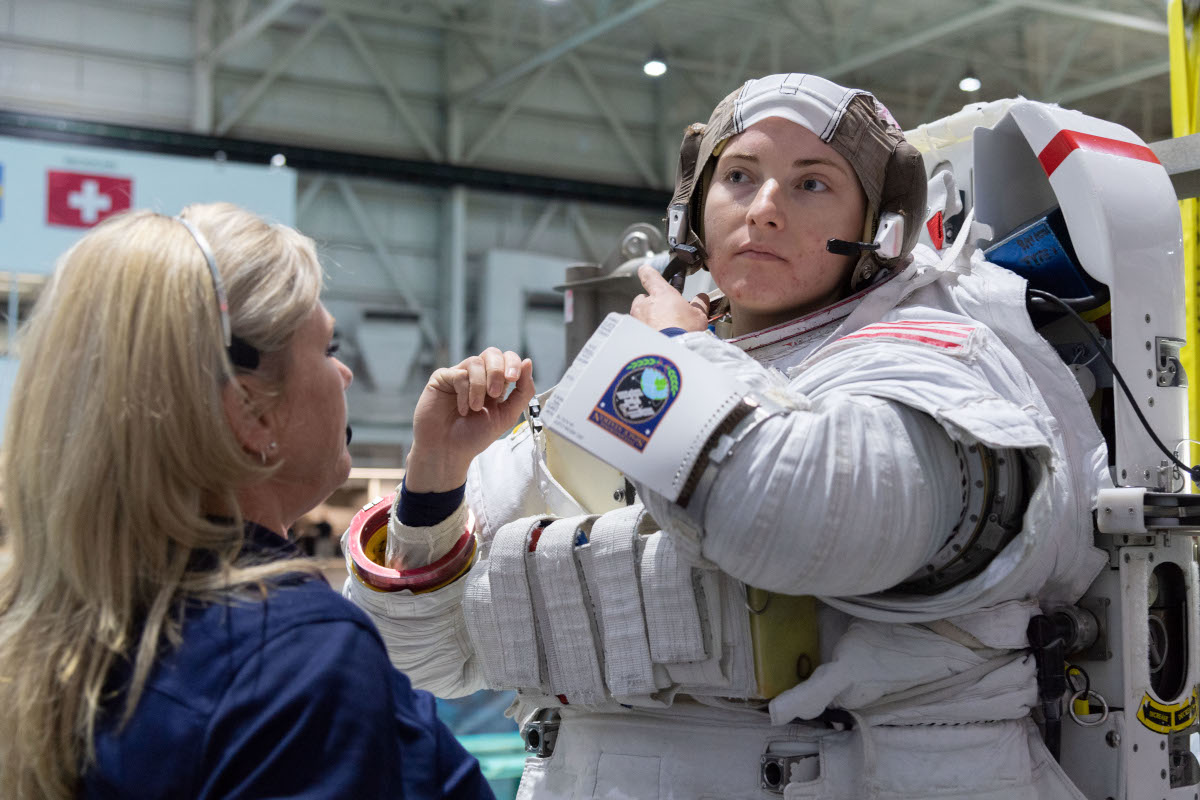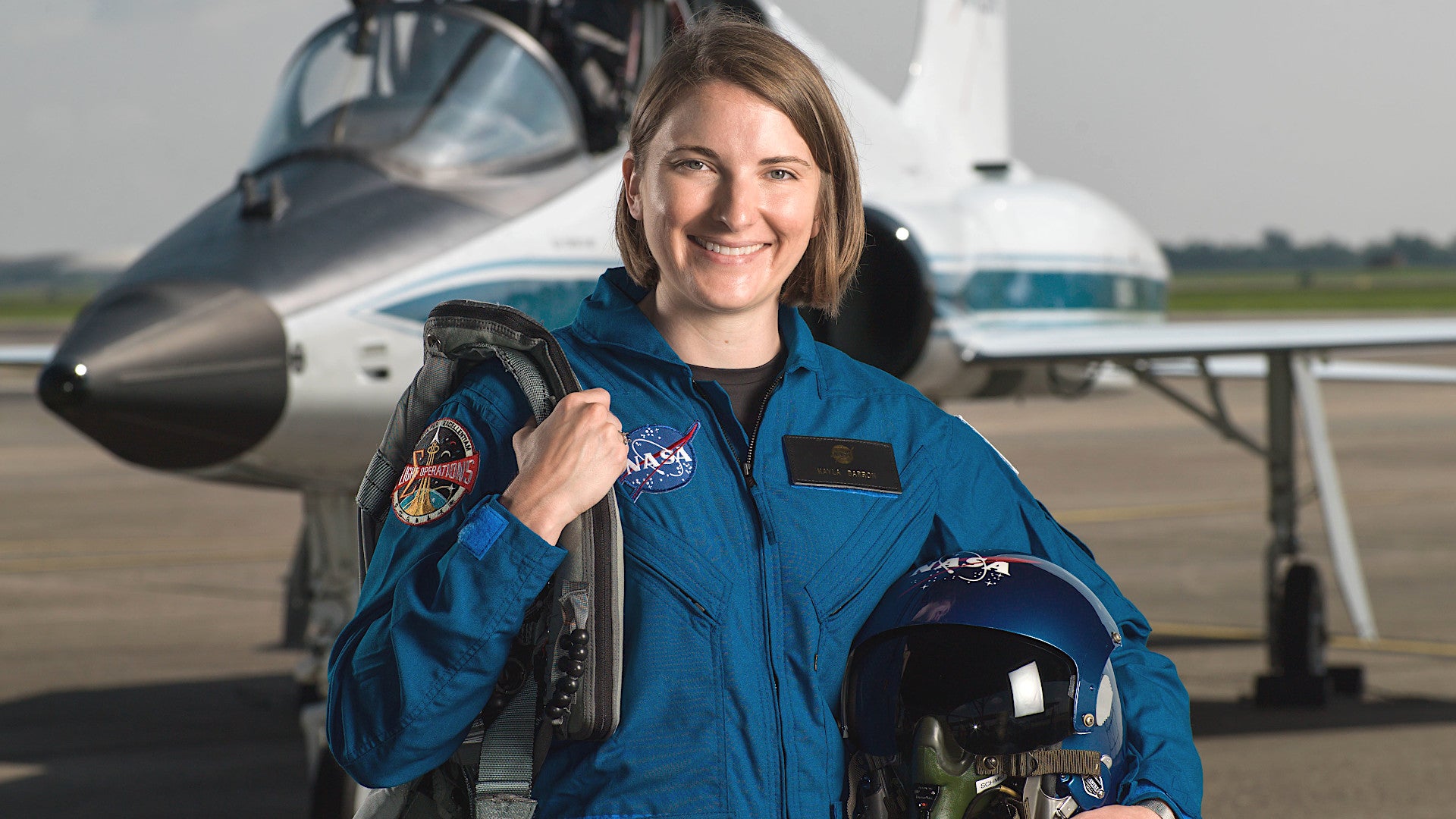Kayla Barron, a U.S. Navy Lieutenant Commander who was among the first female officers to serve onboard one of that service’s submarines, is among a group of NASA astronauts who could be headed to the Moon as early as 2024. Of the other 17 astronauts who now make up what NASA is calling the Artemis Team, around half are or have served in the military.
NASA announced the names of the astronauts selected for the Artemis Team on Dec. 9, 2020, on the occasion of the eighth National Space Council meeting, which took place at the Kennedy Space Center in Florida. NASA had first unveiled the overarching Artemis program, which is its new lunar exploration effort, in September.

The goal is to send American astronauts to the Moon on the Artemis III mission in 2024, which will be the first time anyone has set foot on the lunar surface since Apollo 17 in 1972. Artemis I will be an uncrewed flight test of the Orion space capsule launched using the Space Launch System rocket, scheduled for 2021, while Artemis II will be a crewed flight test without a lunar landing, set to take place in 2022.
“I give you the heroes who will carry us to the Moon and beyond – the Artemis Generation,” Vice President Mike Pence said in announcing the individuals who make the Artemis Team. “It is amazing to think that the next man and first woman on the Moon are among the names that we just read. The Artemis Team astronauts are the future of American space exploration – and that future is bright.”
One of the names Pence read was that of Kayla Barron, who graduated from the U.S. Naval Academy in 2010, was commissioned in the service and immediately attended graduate school at the University of Cambridge in Cambridge, England as a Gates Cambridge Scholar. There she earned a master’s degree in nuclear engineering, with her research focusing “on modeling the fuel cycle for a next-generation, thorium-fueled nuclear reactor concept,” according to NASA.
She subsequently joined the first cadre of U.S. Navy female officers to serve aboard the Navy’s nuclear submarine fleet. In 2009, then-Secretary of the Navy Ray Mabus and then-Chief of Naval Operations Admiral Gary Roughead had first begun working to eliminate the long-standing prohibition on women serving on submarines. Barron is also a graduate of Nuclear Power School, also known as Nuke School.

In 2011, Barron reported to the Ohio class ballistic missile submarine USS Maine. She subsequently qualified as a Submarine Warfare Officer and served onboard Maine for three deterrent patrols. In 2017, she was selected for astronaut training, at which time she had moved on to become the Flag Aide to the Superintendent of the U.S. Naval Academy.
Her astronaut training included flights in NASA’s T-38 supersonic jet trainers and mock spacewalks in deep pools. There were also lessons in Russian to help converse with Russian cosmonauts during any potential trips to the International Space Station. She described herself as a “struggling conversationalist” in the language in an interview with The Spokesman-Review newspaper in Washington State published earlier this year.

No woman has ever set foot on the Moon, which puts Barron, as well as the other eight women in the Artemis Team, in a position to make a different kind of history.
As for submariners in space, it makes a lot of sense and Barron won’t be the first. Often times we hear that spaceflight is more like operating on a submarine than flying in a cockpit. Of course, nuclear know-how will likely be a critical element of future excursions to the moon, as well.
Eight other members of the Artemis Team also have their own ties to the U.S. armed services. This includes absolute rock star Jonny Kim, a former U.S. Navy SEAL who also graduated from the University of San Diego with a bachelor’s degree in mathematics in just three years and then went on to get an M.D. at Harvard Medical School. You can read more about Kim’s amazing story in this past War Zone piece.

Not surprisingly, military pilots are heavily represented among the rest of the Artemis Team. There’s U.S. Air Force Colonel Raja Chari, a graduate of the U.S. Naval Test Pilot School, whose stick time, including some in combat, is in the F-15E Strike Eagle, F-16 Viper, and F/A-18 Hornet, as well as the F-35A Joint Strike Fighter. He also served as the head of the Air Force’s 461st Flight Test Squadron and the Director of the F-35 Integrated Test Force.

Navy Lieutenant Commander Matthew Dominick, another graduate of the Naval Test Pilot School, flew F/A-18E Super Hornets with multiple Navy squadrons, including in combat, before moving over to his service’s test and evaluation community. As part of Air Test Evaluation Squadron 23 (VX-23), he flew F/A-18 Hornets, F/A-18E/F Super Hornets, and EA-18G Growlers, among many other types, and contributed to the testing of a wider array of aircraft and systems.

Victor Glover, a Navy Commander, has a similar flying resume, with time in combat-coded squadrons equipped with the F/A-18 Hornet and F/A-18E/F Super Hornet, as well as an assignment with VX-21, where he flew those aircraft, as well as EA-18G Growlers. He subsequently moved on to the Navy’s Office of Legislative Affairs and was a Legislative Fellow working at the U.S. Senate when he was picked for astronaut training.

U.S. Marine Corps Lieutenant Colonel Nicole Mann flew F/A-18 Hornets with Navy and Marine combat-coded squadrons and spent time assigned to VX-23. She was the Joint Mission Planning System-Expeditionary (JMPS-E) Integrated Product Team (IPT) Lead within the Naval Air Systems Command’s (NAVAIR) Strike Planning and Execution Systems officer, or PMA-281, when NASA selected her for astronaut training.

U.S. Army Lieutenant Colonel Anne McClain, who has already spent than 204 days in space on the International Space Station, first flew the OH-58D Kiowa Warrior in combat for that service. She is also a rated pilot in the UH-60 Black Hawk and UH-72 Lakota helicopters, as well as the C-12 Huron fixed-wing aircraft.

Marine Corps Major Jasmin Moghbeli flew AH-1W Super Cobras for that service, including Afghanistan, as well as spent time assigned to VX-31, VMX-1, and VMX-31, where she flew UH-1Y Venom and AH-1Z Viper helicopters in test and evaluation roles. In 2017, when NASA picked her for astronaut training, she was a quality assurance and avionics officer testing UH-1Ys and AH-1Zs with VMX-1.

Army Lieutenant Colonel Frank Rubio flew UH-60 Black Hawks, including during combat deployments to Bosnia, Afghanistan, and Iraq. He also has an M.D. from the Uniformed Services University of the Health Sciences in Bethesda, Maryland, and was serving as the battalion surgeon for 3rd Battalion, 10th Special Forces Group (Airborne) when NASA picked him to start astronaut training in 2017.

Navy Captain Scott Tingle, the last of the military personnel in the Artemis Team, flew F/A-18 Hornets and F/A-18E/F Super Hornets will with combat-coded squadrons, as well VX-9 and VX-23. He was the Assistant Program Manager/Systems Engineer for the Standoff Land Attack Missile (SLAM) and Harpoon weapon systems within NAVAIR’s Precision Strike Weapons Program Office, or PMA-201, when he was picked for astronaut training.

It’s also worth noting that another member of the Artemis Team, Kjell Lindgren, attended the U.S. Air Force Academy with the intention of becoming a pilot. Unfortunately, a medical condition prevented this from happening and he never took up a commission in that service. He subsequently went on to earn a bachelor’s degree in biology from the Air Force Academy, as well as a master’s degree in cardiovascular physiology and an M.D., both from Colorado State University. He has already logged 141 days in space across two expeditions to the International Space Station.

You can read much more about all of the members of the Artemis Team, who all have impressive resumes, here.
NASA still has yet to announce the designated crews, as well as alternate astronauts, which will also include international partners, for either the Artemis II or III missions, or any subsequent trips to the Moon or beyond. With Kayla Barron and the other U.S. military officers making up 50 percent of Team Artemis, if nothing else, it seems very likely that the armed services will be well-represented in these future space missions.
Contact the author: joe@thedrive.com
